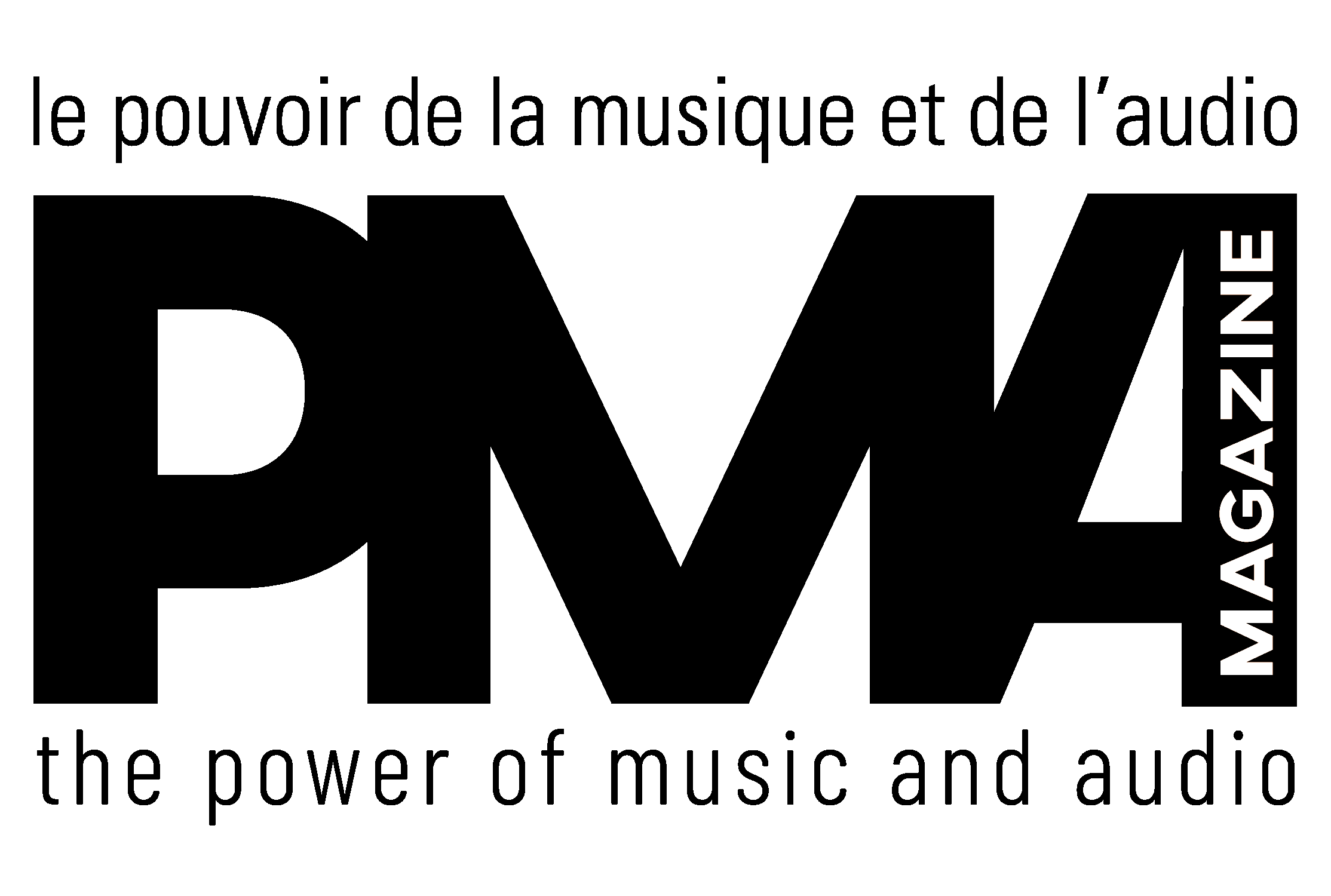
Prices listed are in US$.
All images courtesy of Veri-Fi Audio, BoyuuRange, and the author.
Here in the US, we’re currently in a very strange place in our diplomatic and business relationships with many nations throughout the world, most prominently with one of our largest trading partners, China. The on again-off-again tariffs imposed by the current administration have wreaked havoc on manufacturers and distributors, forcing many to raise prices, often substantially. I speak regularly with audio manufacturers in the US whose products are designed here but built in factories in China. They’ve spent decades cultivating manufacturing relationships there, and it’s rapidly becoming an untenable situation on both sides of the Pacific. Some have been able to find unbelievably creative ways to reduce the impact of the tariffs, but we seem to be reaching a critical mass point where no one will be spared—it’s absolute insanity.
Last year, at about this same time, I wrote an article for PMA Magazine that touched on many aspects of audio gear manufactured in China; you can read those observations in my survey of Chi-Fi audio equipment. I was quite taken aback by the responses to the article, which were varied, but often dismissive of the term Chi-Fi. Many regarded it as pejorative or having a negative connotation toward Chinese-made gear. That wasn’t my intent, as a significant cross-section of my two audio systems—an all-analogue one and a digital source one—include power amplifiers, loudspeakers, subwoofers, DACs, disc players, and even network streamers that are manufactured in China. I’ve had a surprising level of interaction with Chi-Fi products over the years and most of those experiences exceeded my expectations. I fully understand the disregard some American manufacturers have for Chinese-made gear, but just as many have embraced relationships in the Far East, which allows them to control all design aspects while keeping costs low. Those arrangements are being endangered by the current constant political wrangling; hopefully, the situation will find a resolution in the not-too-distant future.

Fabulous New Power Conditioning Gear from Vera-Fi Audio
Mark Schifter of Vera-Fi Audio reached out to me about a month ago, teasing me with a new trio of products he knew I’d love. Those products were the Line Noise BlackHole, the Snub Station Zero, and the Infinity Fuse. All are designed in the US but manufactured in China to exceptionally high tolerances. They’re mostly intended to provide your system with clean AC power; that threw me for a loop, as I already had highly regarded power conditioning in both rooms from a major manufacturer. Mark sent pairs of Line Noise BlackHole and Snub Station Zero devices, and a single Infinity Fuse; I had to reach out to him for his suggestions as to how I should proceed with their connection in my two systems. First step: remove the existing power conditioning unit from each room, starting with my analogue source system.

The Line Noise BlackHole (LNBH) is an EMI/RFI passive sink filter designed to clean up noisy AC power. It employs no current limiting or compression and offers high level attenuation of differential and common mode noise, as well as providing significant surge protection capabilities. Plain and simple, it lowers the noise floor without impeding the ability of your power amplifiers or other equipment to deliver unhindered current. The LNBH plugs directly into a wall outlet and is powered by a rear-panel set-and-forget switch. Its front panel features a single, multi-compatible outlet that accepts both IEC and Schuko power cords. The Snub Station Zero (SSZ) is an AC mains power conditioner that features a state-of-the-art DC blocker, a high-performance EMI filter, and a soft-start circuit, which prevents in-rush current that can damage equipment during the power-up phase. The SSZ plugs directly into the LNBH’s front panel outlet and features three multi-compatibility outlets on its front panel. One of these outlets is intended for connecting your power amplifier; its soft-start circuitry is especially beneficial for SET, tube, or vintage amplifiers. It also features a single power switch on the rear panel.

The third device is the Infinity Fuse (IF); it’s a new variation of Vera-Fi’s Swiss Digital Fuse Box (SDFB), which electronically replaces the fuse in your power amplifier or in many other electronic devices. Whereas each SDFB is programmed for device-specific amperage, the IF is user-programmable, with front-panel DIP switches that let you set both the fuse value and type—whether fast-acting or slow-blow. This may be an unfamiliar concept to many, but after living with an SDFB in my all-analogue system for a year, I can say it really works! It supercharged my PrimaLuna EVO 300 tube integrated amp in a way that unleashed a jaw-dropping increase in performance. (You can read more about how the SDFB was inserted into the playback chain in my original review at Positive Feedback.) In this new implementation, I used my existing SDFB plugged into the high current outlet of the SSZ, with the PrimaLuna EVO 300 plugged into the SDFB. The newly supplied IF device was saved for later use in my digital source system. One caveat with all this equipment: the total amperage load for all three devices must not exceed 10 amps, but that’s not as limiting as it might at first sound. None of the connected equipment came even close to the 10-amp total.

My all-analogue system contains a pair of turntables, each with Ortofon cartridges (2M Mono, Quintet Bronze MC), a PS Audio Stellar phono preamp, the PrimaLuna integrated amp, and a pair of XSA Labs Vanguard standmount monitors working in tandem with a pair of Caldera 12 subwoofers. The phono preamp and turntable in use were plugged into the two remaining outlets on the SSZ. Prior to the arrival of the Vera-Fi equipment, there was a constant, slightly nagging, low-level electronic buzz present in the background—nothing major, but irritating nonetheless. I had essentially written it off as coming from either a cartridge mismatch, something in the phono preamp’s circuitry, or perhaps in the PrimaLuna tube integrated. When I flipped the power switches on the new Veri-Fi gear and everything else in the updated system, I was met with absolute silence. And I mean nothing, at any volume level. I sat in complete silence for about an hour, cranking the volume knob of the PrimaLuna amp to levels far beyond anything used in reasonable playback, and marveled at the lack of noise other than the very gentle hiss of vacuum tubes.

The Vera-Fi equipment took what I considered to be an already great system—with a minor tick—and lifted it to another stratosphere of goodness. Gobsmacked doesn’t come even close to describing my elation; music now poured forth from this system with a newfound clarity and effortlessness that defied belief. As I told Mark Schifter in a phone call immediately afterward, the LNBH and SSZ were undeniably Vera-Fi Audio’s most important product launch to date! Simply improving the AC power had resulted in a massive improvement across every performance metric of my analogue system.

The BoyuuRange A50 MkIII SET Integrated Amplifier Arrives With Great Fanfare
Steve Guttenberg raved about this inexpensive, Chinese-made SET (Single Ended Triode) tube amplifier on his YouTube channel—his video happened to appear in my Facebook news feed. At under $1000 for a true SET 300B tube amp, I had to give it a try and ordered one right away. The U.S. distributor is China-hifi-Audio.com, but the amp can be delivered more quickly if ordered from Amazon—I got it in two days. Prior to its arrival, I set up the digital source system with the Vera-Fi Audio power conditioning equipment in the same way as in the all-analogue room. With the high-current outlet on the SSZ reserved for connection of the IF and the BoyuuRange A50, my DAC and network streamer were plugged into the remaining outlets.

The digital source system configured for this arrangement featured my S.M.S.L. VMV D2R DAC, fed by an Aurender A1000 server/network streamer. The BoyuuRange A50’s tube complement includes a 5Z3PAT rectifier tube (which converts AC line input to DC to power the amp), a pair of 6N8P input tubes, and a pair of 300B triode power tubes. The 300Bs were Psvane tubes (from China), but the rectifier and input tubes were marked with a logo I’d never seen before. Several hours of online research revealed them to be older NOS Shuguang tubes (also from China). The 300B is revered among audiophiles, who also widely consider the tube rectifier to be the element that enables the 300B’s “bloom” effect. The A50, as is typical for most 300B amplifiers, is specified to output only 3Wpc, but generally is capable of 7.5Wpc, so a very high-efficiency loudspeaker is required to achieve satisfying sound. The amp has three single-ended (RCA) input options, with taps for 4 and 8 ohm loudspeakers. The A50’s circuit design utilizes no negative feedback, and also features an ALPS volume control potentiometer. The A50’s highly polished outer case features a gold-toned aluminum front panel that sports a pair of VU meters with knobs for input selection and volume control; its build quality is almost over-the-top! Unusually — especially for an SET amp at this price point — the A50 is self-biasing, which makes its operation even more effortless.

My intent was to use my pair of KLH Model Five loudspeakers, which have a sensitivity of 90 dB/watt, in tandem with a pair of Caldera 10 subwoofers connected by their speaker level inputs to the A50’s speaker terminals. I felt the Model Fives would be a perfect match, but that proved not to be the case—for most listening, they were okay, but if I pushed the volume on more challenging selections, the amp frequently clipped. I then remembered the pair of standmount Klipsch RB3 Reference monitors sitting in my supply closet—they’re rated at 94 dB/watt, and despite being over 25 years old, proved a perfect match for the A50. Here’s the kicker: I found them at a thrift shop ten years ago in mint condition, and only paid $10 for the pair that originally sold for $900. After moving them about the room a bit, slightly adjusting toe-in, and rearranging wall treatments, everything snapped into place.

Music now played through this system with power, dynamics, and authority, and presented a remarkable sense of scale for such a relatively small speaker setup. I chatted with Nelson Wu from RAY Tubes about the setup, and he literally gushed about how well-made the BoyuuRange amps are, and how baffled he is that they can present so much value to the audiophile at such a low price. Even with the bargain-basement stock tubes (after they’d burned in for about 30 hours or so), the A50 was surprisingly musical, with the kind of clarity and transparency I’d never dreamed possible from a $900 SET amp.

And I squarely place much of that goodness on the Vera-Fi power equipment, which in the digital source system delivered the same level of AC powerline quiet I was hearing in the all-analogue room. And the IF was an important addition to the setup—Mark Schifter told me that the IF was designed as an eventual replacement for the Swiss Digital Fuse Box, and its adjustability makes that possible at a lower cost than the SDFB. I experimented with before-and-after scenarios, and the difference was unmistakable. Listening without the IF was good, but with it in place, the A50 would play beyond its 0dB threshold, often hitting unclipped peak levels that were several decibels beyond what should have been its maximum output level. The IF definitely allowed the A50 to play more effortlessly, and with an even greater level of authority. I got the BoyuuRange A50 as a fun diversion but now can’t seem to stop listening to it, and that situation will probably intensify when the full complement of RAY Select and Reserve tubes arrive later this month. A follow-up will be forthcoming when those arrive and get sufficiently burned in.

Chi-Fi Gear Keeps Bringing More Goodness!
My recent deep dive into Chi-Fi started out much as it has in the past; I didn’t know what to do with most of the new Vera-Fi gear, and the BoyuuRange amp was an impulse purchase. I had no idea that either would transform my listening experiences to the extent that they have. My introduction by Vera-Fi’s Mark Schifter to a variety of gear that’s either completely made in China or assembled from parts sourced there has elevated my playback performance to levels I never dreamed possible. Trust me—if his gear didn’t improve my systems’ musicality or enhance their performance, it would never have remained in either. And Nelson Wu has a wealth of knowledge of not only Chinese tube production, but also Chinese audio manufacturers. His guidance has helped me select gear that not only offers superb performance, but is also exceptionally well-made.

I sincerely hope the political climate here in the U.S. shifts, and soon, such that the relationships cultivated by manufacturers and distributors of Chi-Fi gear will continue to grow. These incredible products will elevate almost any audio system, and are available at prices well within the reach of everyone in the high-end. Until next time, good listening!
Prices:
- Line Noise BlackHole: $595
- Snub Station Zero: $695
- Infinity Fuse: $420
- Boyuurange A50 Mk III SET amplifier: $850
Vera-Fi Audio
Reisong/BoyuuRange Audio















Leave a Reply